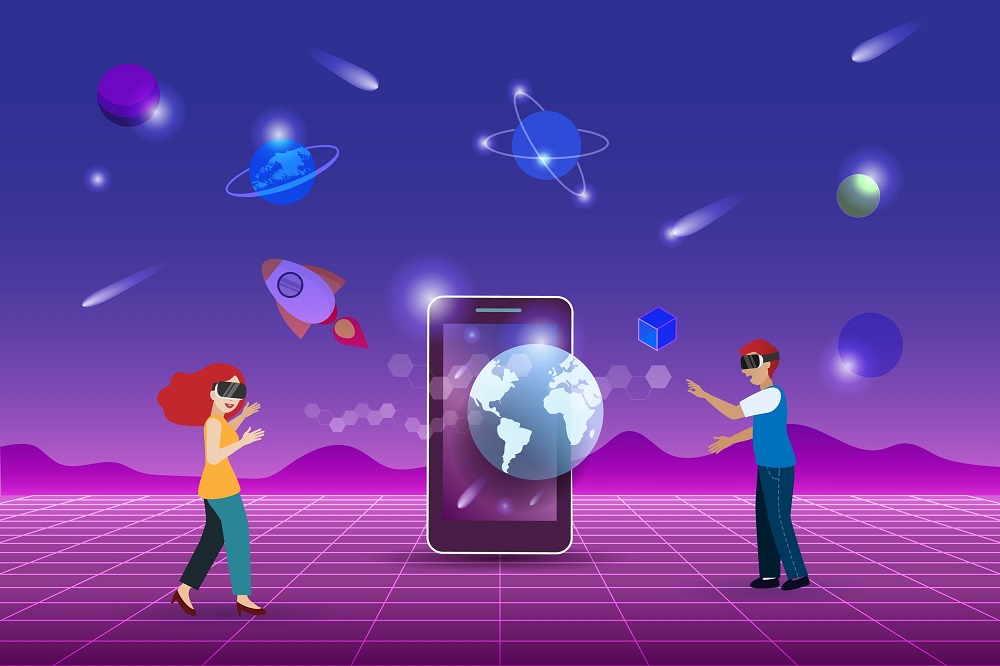
The Future of Travel: A Guide to Virtual Tourism

A very interesting trend is emerging of late- Virtual Tourism!! The term travel as per your comfort got a whole new meaning. If there is any place on your bucket list, that you haven’t been able to visit till, now, then VR tours are for you!
But what is it and why is it trending? Let’s explore!!
Ever dreamt of scuba diving and touching the coral reefs or witnessing first-hand what an active volcano looks like? ... If yes, then VR experiences are for you!! These offer immersive and simulated experiences without physically traveling to these places.
For example, Beeyonder was launched in December 2020 and takes people on various adventures around the world, including Antarctica. The founder of Beeyonder is a bilateral amputee, due to which joint pain prevented her from walking great distances. She was keen to provide access to travel to others like her and hence launched Beeyonder to fulfill the travel aspirations of millions like her. The company has launched interesting tours like glow-in-the-dark Aus
tralian forest tours so people can see fluorescent and bioluminescent wildlife.
Travelers can experience tea time in Japan and land in Norway and see how the Vikings lived. The company offers private and group tours with seasoned guides and allows guests the flexibility of interacting with them.
Amazon has expanded into the segment with Amazon Explore. The company offers live and interactive virtual tours and workshops like cooking classes. The live stream is interactive and a host answers all questions and queries. People can search for their choice of virtual travel options and even make purchases or buy souvenirs from places they visit.
What is Virtual Tourism?
Virtual tourism is one of the growing VR trends to look out for in the next few years.
Virtual tours and tourism use technology that allows people immersive, 360-degree virtual visits to places, offices, factories, etc. Touring or visiting a place virtually is a unique way to experience places and locations, which might not be possible for all.
Users can get a first-hand experience of the sights and even activities that a place offers. Remote locations, historic and heritage sites, natural wonders, ocean beds, and space… tourists can visit any place from the comfort of their homes.
So, if as a kid, you dreamt of setting foot on the moon, but couldn’t, now you can, without leaving your home and yet experience the thrill of it all in the metaverse with VR technology. The VR tour can probably offer an enhanced better than the real experience as well.
So if you need a quick break or need to refresh yourself with a quick pick-me-up trip to the pristine mountains, but don’t have the time, opt in for a virtual tour and satisfy your wanderlust cravings with virtual tourism.
What are the Features and Benefits of Virtual Tourism?
Virtual tours are growing as a market segment and augmenting the efforts of the travel and hospitality sector. People are signing up for them because they offer flexibility and are cost-effective. Visitors can also dabble in the try-before-buy approach.
They can check out the premises and facilities before their actual physical trip. It is also a boon to many people who are disadvantaged and cannot travel due to health reasons.
Virtual Tourism is an interesting and emerging metaverse use case that is finding much support from service providers as well as consumers.
Let’s take a look at some of the stand-out features and benefits of Virtual Tourism.
Immersive Experiences
VR technology is known for the immersive and interactive environments that it can create. Hence Virtual tours immerse travellers in a 3D, 360-degree, multisensory virtual environment where they can benefit from the realistic experience of a destination.
Curated Tours
3D environments are highly customizable and a good designer team can do wonders with the simulated locations. Travelers can personalize their set of experiences as they desire. They can choose their itinerary and other preferences as they require.
People can choose to visit a past era or time period as well. Want to shake hands with Shakespeare- sign up for a VR tour!!
Interactive Engagement
Virtual tourism with 3D-powered tours facilitates dynamic and robust interactions with destinations and locations or places of interest. Travellers can be engaged better and learn more about the culture and traditions of the place.
Flexible and Cost Effective
Travellers can travel as per their comfort and schedules, without interrupting their daily life, or take exclusive time off to explore. It also becomes cost-effective. Moreover, travellers can visit remote and inaccessible places, which they would not be able to do in real life.
For example, senior citizens can revel in new and novel adventures, which their age might otherwise not permit.
Conclusion
Allied Market data reports state that the global virtual market for tourism reached a valuation of $448.10 million in 2020 and is expected to touch $6.5 billion by 2030, growing at a CAGR of 31% from 2021 to 2030.
Virtual tourism is here to stay and grow. The comfort and convenience it offers are splendid. It can serve as a valuable research tool that allows travellers to research before going and checking out hotel facilities as well.
It can also fulfil the aspirations of travellers who otherwise would not be able to visit and see different places for themselves. So, virtual tourism has something for everyone, whether you revel in the adrenaline rush of bungee jumping or indulge in a virtual session.
Try it to experience it!
Edverse is a leading name in the domain of offering metaverse and virtual reality solutions for educational as well as business purposes. So whether you’re a travel company or a real estate one, offer your clients immersive and lifelike tours with Edverse’s bespoke metaverse development solutions.